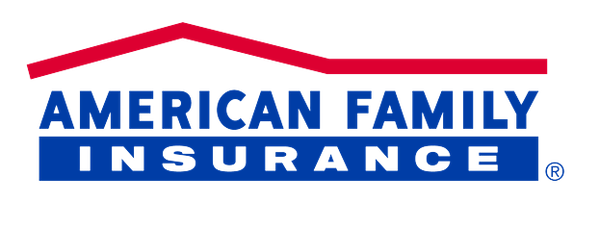Insurance cost comparison guide from different insurers in insurance is an essential financial tool that provides individuals and businesses with protection against unexpected risks and financial losses. However, choosing the right insurance policy can be a daunting task, as there are numerous insurers offering a wide range of coverage options at varying costs. This article aims to explore the process of comparing coverage and costs from different insurers, helping individuals make informed decisions when selecting insurance policies that suit their needs.
Understanding Insurance Coverage
Before delving into the intricacies of comparing coverage and costs, it’s crucial to have a solid understanding of what insurance coverage entails. Insurance policies are contracts between policyholders (individuals or businesses) and insurers (insurance companies). These contracts outline the terms and conditions under which the insurer will provide financial compensation to the policyholder in the event of a covered loss or event.
Types of Insurance Coverage
There are various types of insurance coverage, including but not limited to:
- Health Insurance: Covers medical expenses, hospitalization, and related costs.
- Auto Insurance: Provides coverage for vehicle damage and liability in accidents.
- Homeowners/Renters Insurance: Protects against property damage and theft.
- Life Insurance: Pays a death benefit to beneficiaries upon the policyholder’s death. Business Insurance: Offers protection for businesses against various risks.
Policy Coverage Limits
Every insurance policy has coverage limits, which determine the maximum amount an insurer will pay for a covered loss. These limits can vary significantly among insurers and policy types. Understanding these limits is crucial to assess the adequacy of coverage.
Comparing Coverage
When comparing coverage from different insurers, there are several factors to consider:
Coverage Types and Inclusions
Identify the specific types of coverage included in each policy. Some policies offer basic coverage, while others have additional riders or endorsements that can enhance protection. For example, in auto insurance, compare coverage for collision, comprehensive, and liability insurance.
Policy Exclusions
Pay close attention to policy exclusions, which are circumstances or events not covered by the insurance policy. Understanding exclusions is crucial to avoid unexpected gaps in coverage.
Coverage Limits and Deductibles
Compare coverage limits and deductibles across different insurers. A higher deductible typically results in lower premium costs, but it also means higher out-of-pocket expenses in the event of a claim.
Additional Benefits
Some insurers offer additional benefits such as roadside assistance, rental car coverage, or discounts for bundling multiple policies. These can add significant value to a policy.
Comparing Costs
Comparing the costs of insurance policies is a critical step in selecting the right coverage. Costs can vary widely based on several factors:
Premiums
The premium is the amount policyholders pay regularly (e.g., monthly or annually) to maintain their insurance coverage. Compare premiums for similar coverage levels among different insurers. Keep in mind that a lower premium may result in higher deductibles or less coverage.
Deductibles
As mentioned earlier, the deductible is the amount the policyholder must pay out of pocket before the insurance coverage kicks in. Lower deductibles typically mean higher premiums and vice versa. Evaluate your financial situation and risk tolerance to determine an appropriate deductible level.
Discounts and Savings
Many insurers offer discounts for various reasons, such as safe driving records, bundling multiple policies, or installing safety devices in homes or vehicles. Explore these opportunities to reduce insurance costs.
Coverage Period
Consider the coverage period when comparing costs. Some policies offer discounts for longer-term commitments, while others may charge more for short-term coverage.
Research and Comparison Tools
To make the process of comparing coverage and costs more manageable, utilize various resources and tools:
Insurance Brokers or Agents
Insurance brokers or agents can provide personalized guidance and access to multiple insurance providers. They can help you understand policy details and find options that align with your needs and budget.
Online Comparison Websites
Numerous online platforms allow you to compare insurance quotes from different insurers quickly. These tools often provide side-by-side comparisons of coverage and costs.
Customer Reviews and Ratings
Research customer reviews and ratings to gauge the satisfaction of policyholders with a particular insurer’s service and claims processing. This information can provide insights into an insurer’s reputation and reliability.
Considerations for Specific Types of Insurance
Comparing coverage and costs may vary depending on the type of insurance you are interested in. Here are some additional considerations for specific types of insurance:
Health Insurance
a. Network Coverage: Assess the availability of healthcare providers in the insurer’s network. b. Prescription Drug Coverage: Evaluate the coverage for prescription medications. c. Out-of-Pocket Costs: Consider copayments, coinsurance, and maximum out-of-pocket limits.
Auto Insurance
a. Liability Limits: Ensure that liability limits meet your state’s minimum requirements. b. Uninsured/Underinsured Motorist Coverage: Evaluate the need for additional protection in case of accidents involving uninsured or underinsured drivers.
Homeowners/Renters Insurance
a. Property Valuation: Determine whether the policy covers the actual cash value or replacement cost of your belongings. b. Personal Liability: Review coverage for personal liability claims, such as slip and fall accidents on your property.
Life Insurance
a. Type of Policy: Decide between term life and permanent life insurance based on your financial goals. b. Coverage Amount: Calculate the appropriate death benefit to meet your family’s needs.
Business Insurance
a. Coverage for Specific Risks: Identify the unique risks your business faces and ensure they are adequately covered. b. Business Interruption Insurance: Consider coverage for lost income during business disruptions.
Conclusion on Insurance cost comparison guide
Comparing coverage and costs from different insurers is a vital step in securing the right insurance policies to protect your financial well-being. By thoroughly understanding the coverage options, exclusions, and costs, individuals and businesses can make informed decisions that align with their specific needs and budgetary constraints. Remember that insurance is not a one-size-fits-all solution, so taking the time to compare and customize policies is crucial to achieving comprehensive protection.





